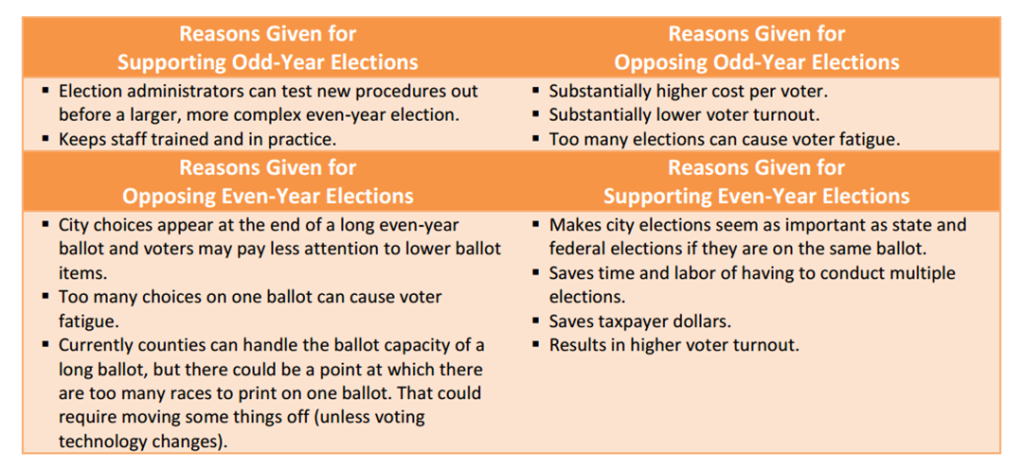Much has been made of California municipal elections in recent months. Cities across the Golden State are abandoning their “at-large” elections in favor of electing representatives by district in order to avoid the political turmoil that has plagued cities like Palmdale. Thanks to this trend, conversations about fair representation at the local level are enjoying are resurgence in both popularity and relevancy.
This morning, the Berkeley-based Greenlining Institute published a report entitled, “Odd-Year vs. Even-Year Consolidated Elections in California.” In it, author Jose P. Hernandez finds that off-year elections not only significantly reduce voter turnout on the whole but result in disportionately small numbers from minority groups.
This conclusion is not far-fetched. LA’s runoff election in March resulted in a turnout of only 23% of the city’s voting base.
The study also found that holding elections separate from regularly-scheduled state and federal elections is costly and raises per-voter cost to the jurisdiction running the election. San Diego’s even-year election in 2010 cost the city just $1.67 per voter while Los Angeles’ election in 2011 cost the city a staggering $52.61 per voter.
“Although there are about 2.5 times as many registered voters in Los Angeles than San Diego… Los Angeles spent 31 times more per vote more in the 2011 general election than San Diego did in the 2010 general election,” Hernandez writes.
Hernandez sought county perspective in the report and accordingly, distributed surveys to 58 county election officials [in California, most municipal elections are administered through the county]. 20 of them returned a completed survey and their answers were used to assemble to following pros and cons list, detailing the rationale of holding odd-year and even-year elections:
Case studies served as a major component of the study, pitting three recent elections in cities with off-year elections against three elections in even-year cities. Hernandez looked at discrepancies between Los Angeles and San Diego, San Francisco and San Jose, and Livermore and Lake Forest.
Hernandez ultimately concludes that holding elections that coincide with state and federal elections offers substantial benefits both in terms of taxpayer dollars saved as well as increased turnout. Additionally, he alleges—given the data of the case studies—that minority representation would be more fairly and adequately represented by a consolidation of elections.
Click here to download the report or view below:
Founded in 1993, The Greenlining Institute is a policy, research, organizing, and leadership institute working for racial and economic justice. According to their site, “We work to bring the American Dream within reach of all, regardless of race or income. In a nation where people of color will make up the majority of our population by 2040, we believe that America will prosper only if communities of color prosper.”





